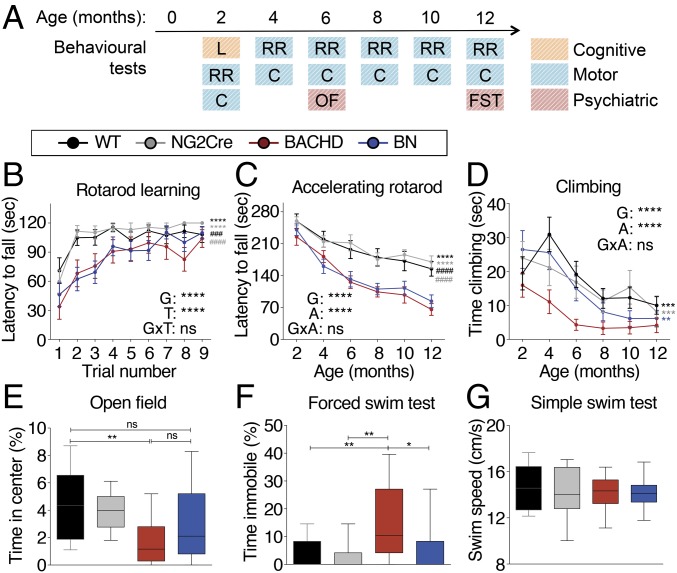Fig. 2.
Behavioral deficits in HD mice are partly the result of mHTT-mediated defects in oligodendroglia. (A) Overview of behavioral assessments. BACHD mice show cognitive deficits in the rotarod learning (B), motor deficits in the rotarod (C) and climbing (D) tests, anxiety-like behavior in the OF at 6 mo of age (E), and depressive-like behavior in the Porsolt FST at 12 mo of age (F). The ability to swim is comparable among genotypes at 12 mo of age (G). BN mice show a rescue in some of the behavioral phenotypes. n = 12–20 mixed gender/genotype. Data represent means ± SEM; ns, not significant; *P < 0.05; **P < 0.01; ***P < 0.001; ****P < 0.0001 (compared with BACHD); ###P < 0.001; ####P < 0.0001 (compare with BN). One-way ANOVA (E–G) or two-way ANOVA (B–D) followed by Tukey’s multiple comparisons test were applied for all behavioral studies. A, age; G, genotype; T, trial.

